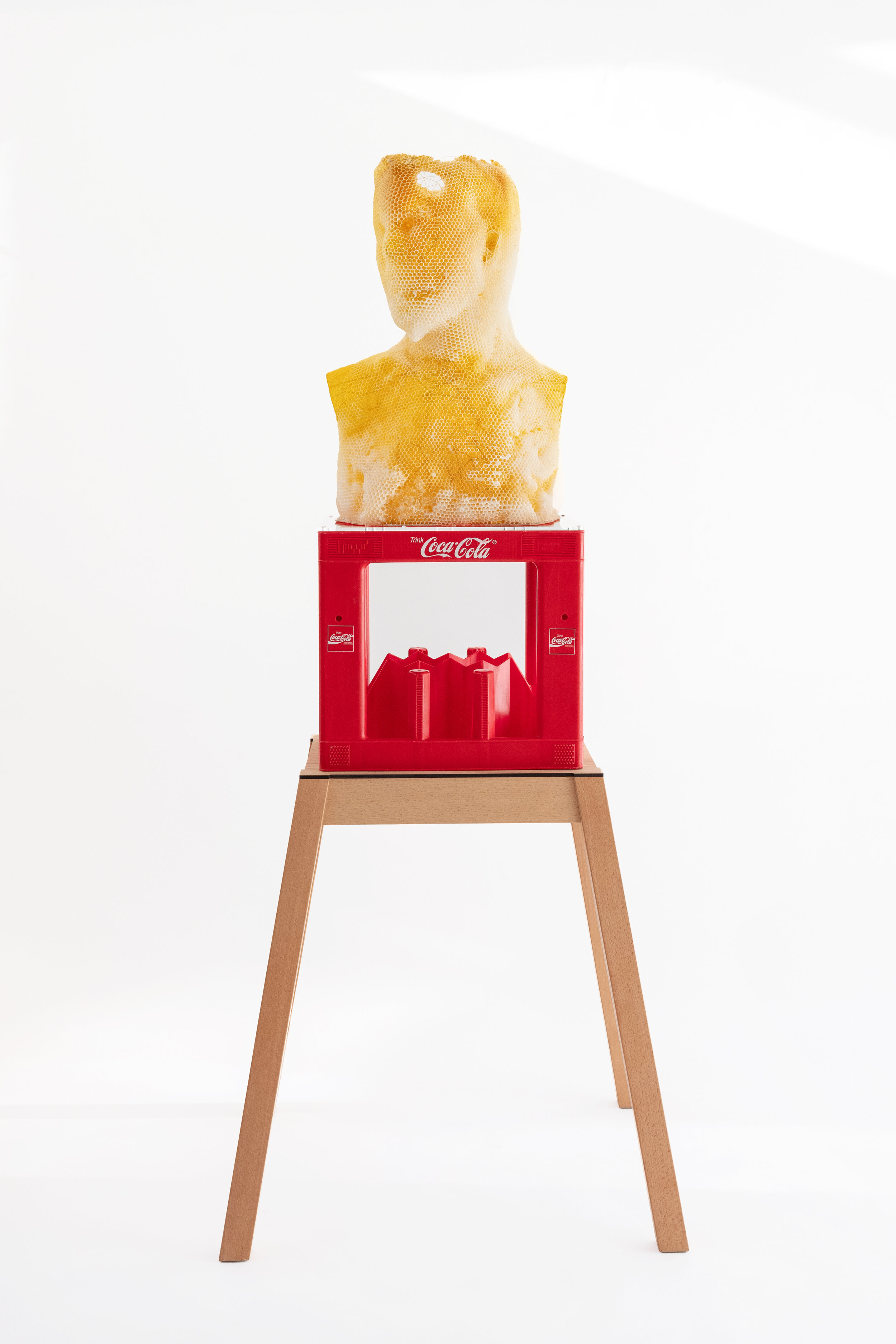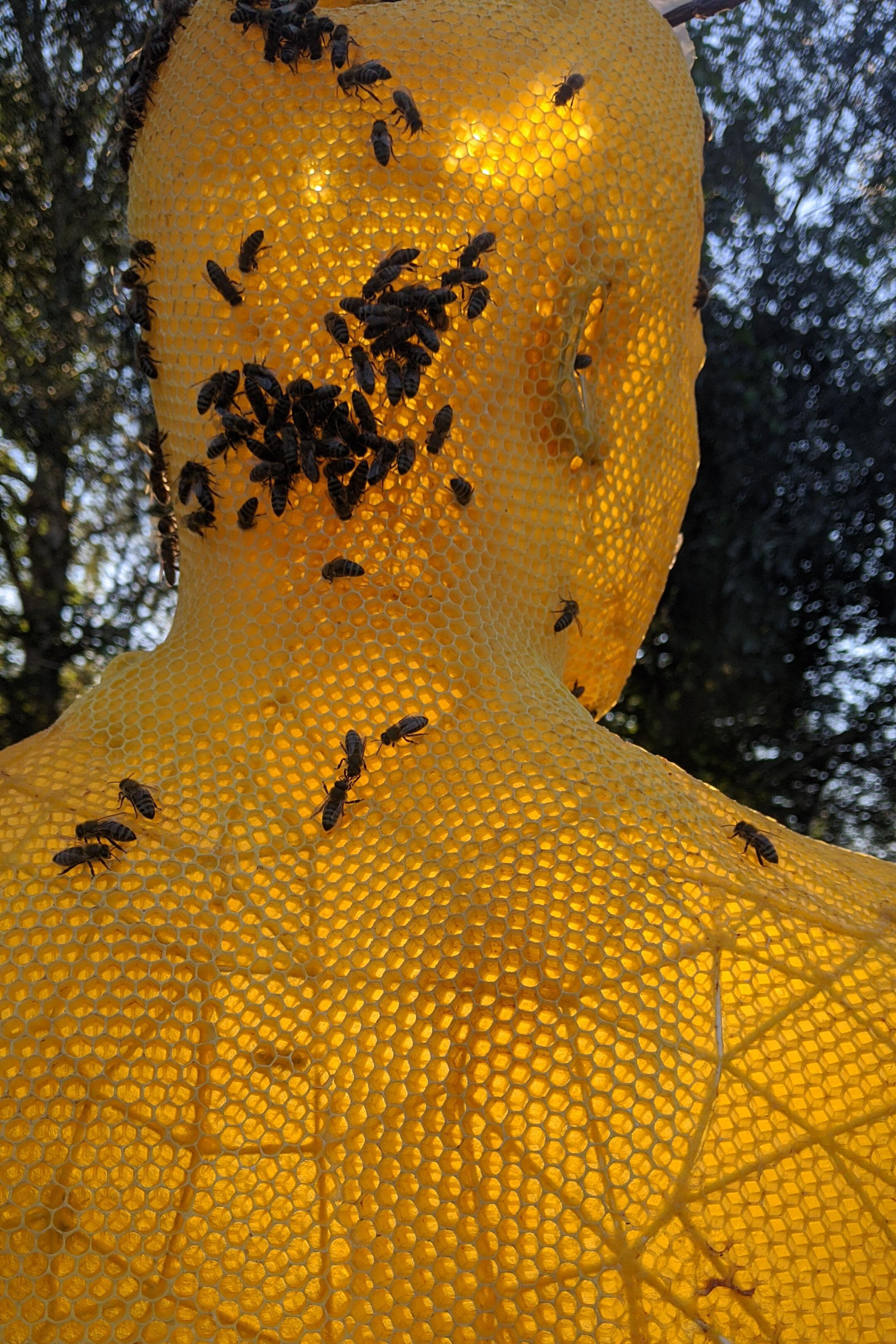Brutus
Year: 2020
Materials: natural beeswax, wood, various plastics
Dimensions: 160 x 70 x 60 cm
Photo: Titia Hahne
This sculpture from “made by bees” series is entitled Brutus after the infamous Roman senator who was involved in the assassination of Julius Caesar. His life story is full of twists and eventually ends in a suicide. Originally looked upon as a traitor, he was resurrected for a while by the Renaissance as a political symbol of the opposition to tyranny. From that period comes also the marble bust by Michelangelo called Brutus and is currently on display at The National Museum of Bargello @bargellomuseums in Florence. Some scholars see the artwork as a “glorification of liberty from tyranny”. The sculpture itself remained unfinished. Inspired, but not bound by, I revisited the famous artwork to look at the fragility of fate and finding salvation. The turbulent times call for desperate measures. Who are the heroes and who are the villains rest in the hands of time which swings like a pendulum. My portrait looks the other way in contrast to the version by Michelangelo. Each epoch has its own tyrannies (perceived and real). What are the tyrannies we are facing today and from what are we trying to liberate ourselves from?
The beeswax sculpture is fragile yet extremely stable. Natural beeswax is one the most durable natural materials potentially lasting thousand of years without deterioration. The portrait rests on the “ready-made” original @cocacola crate (reference to Marcel Duchamp) with hexagonal cells for bottles resembling the cells made by honeybees. With the four legged table/pedestal, I intended to evoke a form of Minotaur, the mythical beast half-man half bull, which is cursed to live in the center of the king's labyrinth (that where the famous phrase Ariadne’s thread comes from).



